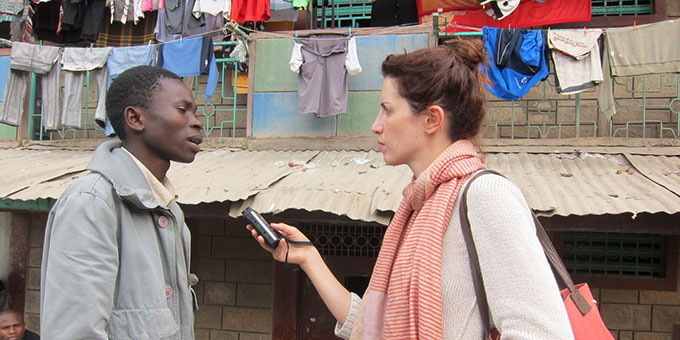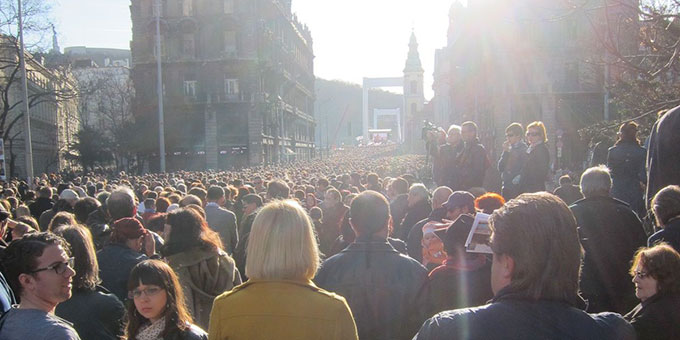Before the first artist was asked to contribute to Creative Time Reports, I flew to Tunisia, arriving within days of the one-year anniversary of the Jasmine Revolution. Outside the half-empty terminal, storm clouds cast milk-white halos around street lamps. It was the middle of winter, and the normally temperate North African country was struck overnight by a cold snap.
A taxi dropped me off just a few miles from Avenue Habib Bourguiba—the Tunisian capital’s main boulevard, and also the location where thousands had gathered to demand an end to dictator Zine Abidine Ben Ali’s 23-year rule.
Within hours, I began meeting artists who were galvanized by the story of Mohammed Bouazizi—the Tunisian fruit seller who self-immolated protesting police brutality—to join the rallying cries for Ben Ali’s departure.
They told stories about the uprising’s frontlines and sleeping for days in barricaded hotel rooms, listening to the sounds of chants mixed with sometimes-violent battles between soldiers and armed militias. They spoke about the feeling of rediscovering home. But mostly they talked about talking: for the first time in their lives, many felt unafraid to openly discuss dissenting views and opposition movements.
I described Creative Time’s 40-year-long tradition of cleaving a path for artists to weigh in on critical issues, such as immigration, AIDS, war and domestic violence—in places like New Orleans’ Lower Ninth Ward, at schools and town squares across the United States, and of course, in our own New York City.
I went on to explain Creative Time Reports’ overarching goal: for artists to weigh in on the times in which we live.
Despite their participation in the revolution, some Tunisian artists felt their voices were becoming increasingly sidelined. They envisioned participation in Creative Time Reports as an opportunity to foreground their opinions on what was happening during the country’s transition to democracy.
There were also some warnings. “Yes, Ben Ali is gone, but it is still not easy for us to speak openly,” one artist said. “There are many risks we have to take if we want our voices to be heard.” In some cases, anonymity would be essential to ensure artists’ safety.
While I dealt with this regularly as a journalist, in my new role as editor for Creative Time Reports these issues were revelatory. How did the organization, whose mission states, “Public spaces are places for creative and free expression,” plan to work in countries where sometimes the opposite is true?
How would we contend with an artist in Malaysia, for instance, wanting to cover his government’s repressive reaction toward protestors demanding electoral reform, while, he explained, social media in the country was being monitored and openly contributing to Creative Time Reports could jeopardize the safety of his fellow artists?
Rather than proffering answers, we posed questions, not only to our community in New York City, but also to artists around the world. I visited Hungary on the eve of the country’s annual Revolution Day celebration to discuss Creative Time Reports with artists and writers leading a growing opposition movement that challenged an overhauled constitution and new restrictions on media freedoms.
Then in Dubai, I spoke with artist Michael Rakowitz, who equated the potential of Creative Time Reports with the political effectiveness of the moment Natalia Dmytruk, a Ukrainian sign-language interpreter, refused to report fraudulent election results to her deaf audience and instead signed the truth. The move emboldened what became the Orange Revolution. “Just like Dmytruk, this project has the potential to open up new ways of performing information, or truth-telling,” said Rakowitz. “It can find ways of circumventing linear, state, and corporate-run conglomerates.”
And in July, I spent a week in Nairobi speaking with artists of all disciplines who were tackling—through poetry, song and film—the upcoming presidential election, five years after the last one resulted in the deaths of an estimated 1,200 Kenyans. With each trip, artists offered more insight into how Creative Time Reports can transform dialogue, and in doing so, nudged us closer to where we are today.
At a time of unprecedented global communication, and in the spirit of international collaboration, we work with artists around the world—including those in Kenya and Tunisia, in Bangladesh, Mexico, Kuwait, Argentina, Afghanistan and here in the United States. Each time, our conversation begins with questions. We ask for interpretations of thorny political situations and reactions to the news, as events unfold. Together we try to craft dispatches that upend traditional media takes, while bringing clarity to some of the world’s most challenging issues.
Creative Time Reports is not simply a news website. Our primary contributors are artists, not journalists, pundits or policy experts. We will feature personal perspectives and critical interventions that question the framework of the news and offer radical recalibrations of the topics at hand, by weaving in the media culture, mythology, psychology or history that inform our political thinking. Free from the disciplinary and institutional restrictions of journalism, artists can make idiosyncratic associations, seek alternative forms of expression and thereby lead us to more holistic truths. Their viewpoints will add to the public discourse in ways we haven’t even begun to imagine.
We are at the start of a new kind of conversation, one that is as informative as it is unconventional. Please do not hesitate to get in touch with your ideas, send us a tweet or comment on our Facebook page!
We are especially thankful to the artists who have and will take a chance with us.







